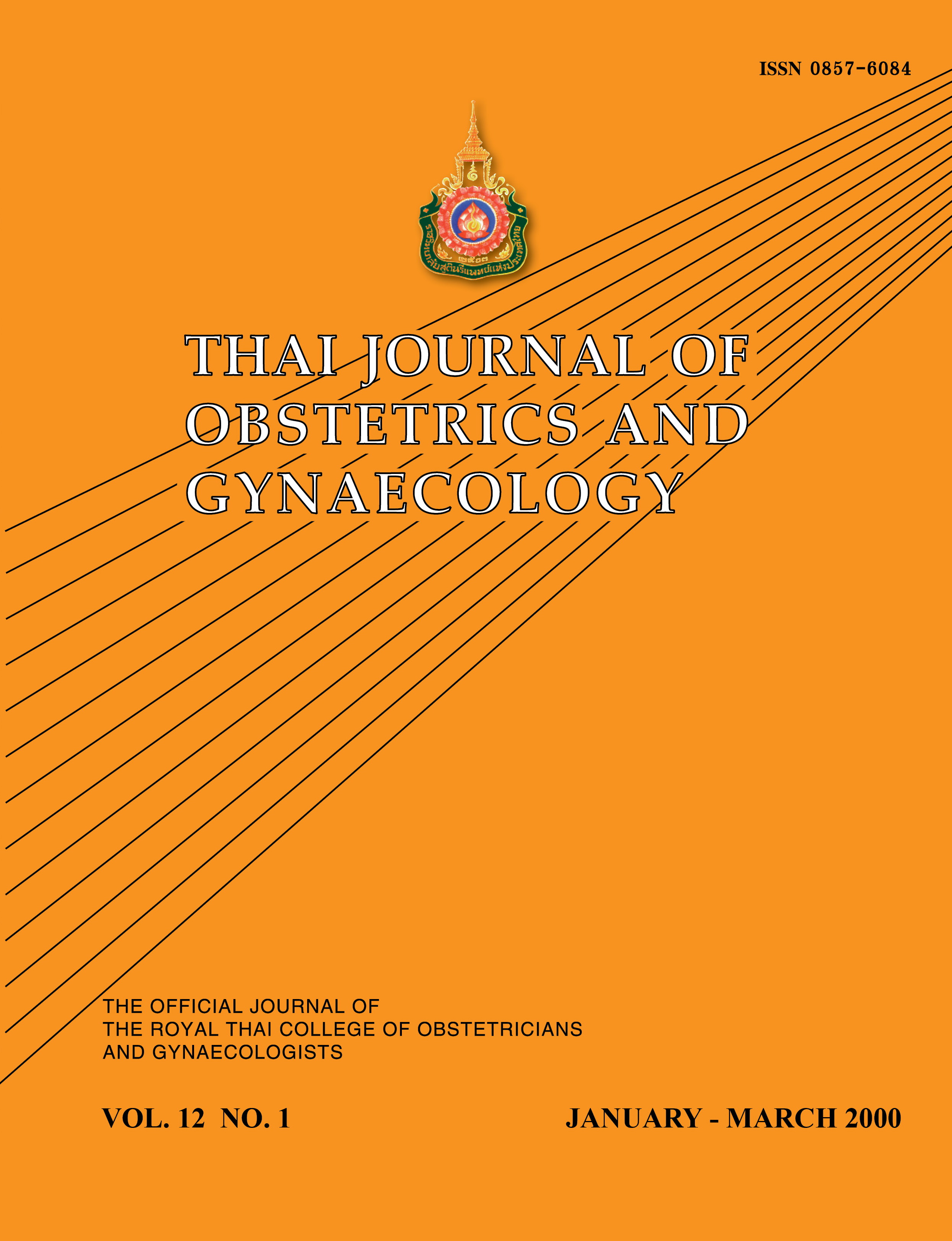Molar Pregnancy: Clinical Analysis of 151 Patients
Main Article Content
Abstract
Objective to analyze the clinical characteristics, treatment, outcome, and risk factors for developing persistent gestational trophoblastic disease (GTD) of patients with molar pregnancy.
Subjects One hundred and fifty-one patients with molar pregnancy between January 1993 and December 1997 were identified. Clinical information of the patients, including age, gravidity, symptomatology, gestational age and uterine size at diagnosis, pre-evacuation B-human chorionic gonadotropin (B-hCG) and treatment was collated from the medical records.
Results The incidence of molar pregnancy was 1.67 per 1,000 deliveries. The mean age of the patients was 24.9 = 6.9 years (range 14-54 years). About half of the patients (47%) had molar pregnancy diagnosed in their first pregnancy. Mean gestational age at diagnosis was 15.3 5.6 weeks. Vaginal bleeding was the most common presenting symptom (86.1%). The uterine size was larger than gestational age in 41.1% of the patients. Although theca-lutein cysts were found in 17.2% of the patients, only one patient underwent emergency surgery due to rupture of the cyst. Complete and partial molar pregnancies were found histologically in 83.4% and 16.6% of patients, respectively. Suction and sharp curettage was the initial treatment without any serious complications. During follow-up, 17.9% of patients had persistent GTD according to serum B-hCG concentrations. Of 20 evaluated patients, complete remission was achieved in all cases with the administration of sinlgie-agent and combined chemotherapy. Univariate analysis showed that patient's age at diagnosis, gravidity and uterine size might be possible risk factors of developing persistent GTD. However, in multivariate analysis, only patient's age (> 30 years) and uterine size (larger than gestational age) were the independent risk factors of this malignant transformation.
Conclusion The independent risk factors of developing persistent GTD were patient's age (>30 years) and uterine size (larger than gestational age).
Article Details

This work is licensed under a Creative Commons Attribution-NonCommercial-NoDerivatives 4.0 International License.


